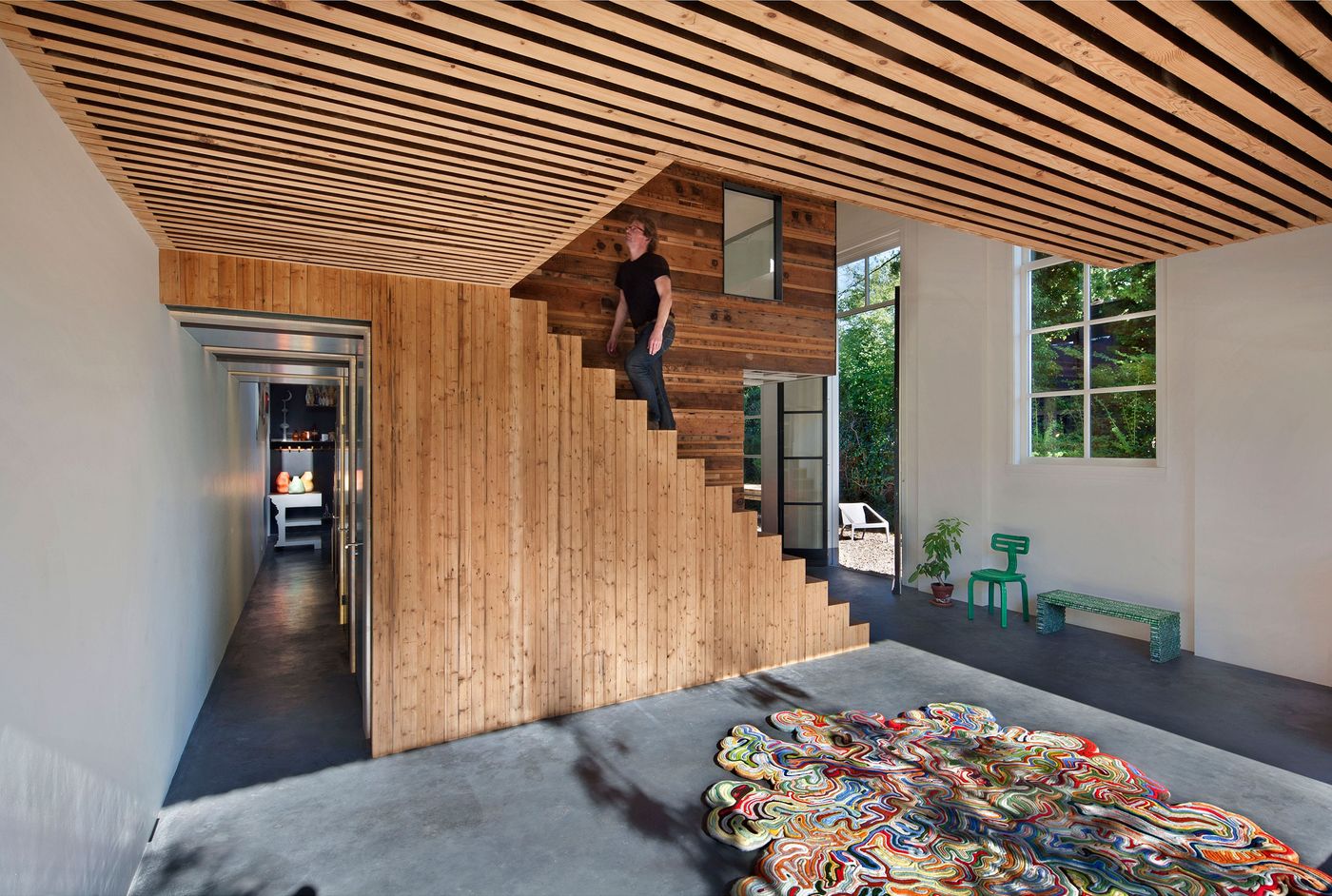
Upcycling to Call Home: "The House of Rolf" in Utrecht
Words by Sara Panagiotopoulou
Location
Utrecht, The Netherlands
Upcycling to Call Home: "The House of Rolf" in Utrecht
Words by Sara Panagiotopoulou
Utrecht, The Netherlands
Utrecht, The Netherlands
Location
The unique live/work space, "House of Rolf," is located in the center of Utrecht, the Netherlands, in a lush garden that belies its bustling location. The brainchild and home of architect and urban planner, Rolf Bruggink, his girlfriend, Yffi van de Berg, and their leggy dog, Janneke Baardmans, the project—the fourth for this creative couple who, in 2010, also dreamed up the Black Pearl Residence in Rotterdam—was completed in 2016, in collaboration with building engineer, Niek Wagemans.
What makes it so unique? It's nestled within a 50 sq. meter coach house built in 1895 beside what used to be an aristocratic home (now multiple residences) in the Maliebaan neighborhood. In 1955, a 200 sq. meter wooden office building was constructed between the home and the coach house but when Rolf bought the premises in 2011, he decided to demolish the office building and upcycle the building materials into his new home… within the coach house.
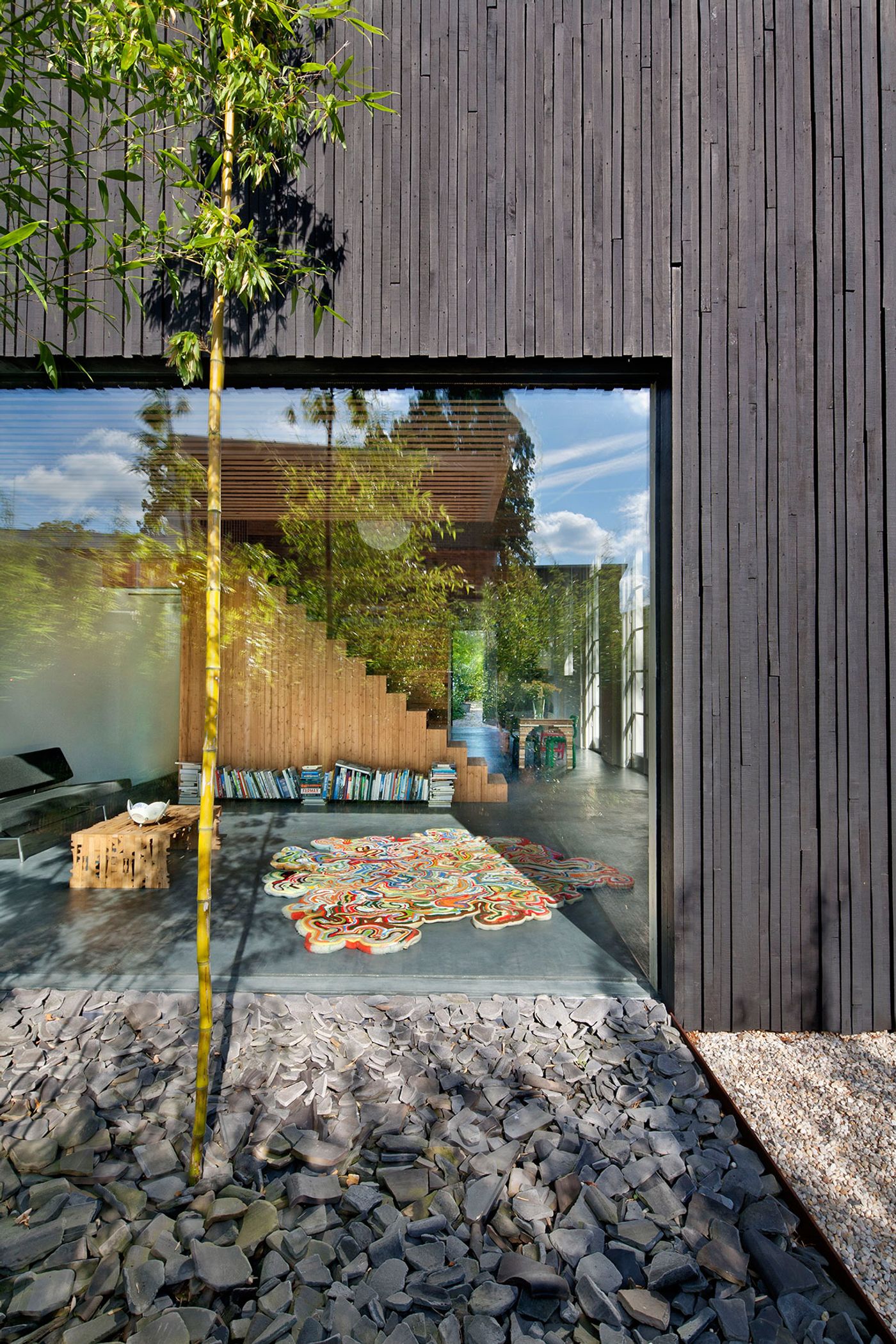
Photography by Christel Derksen & Rolf Bruggink.
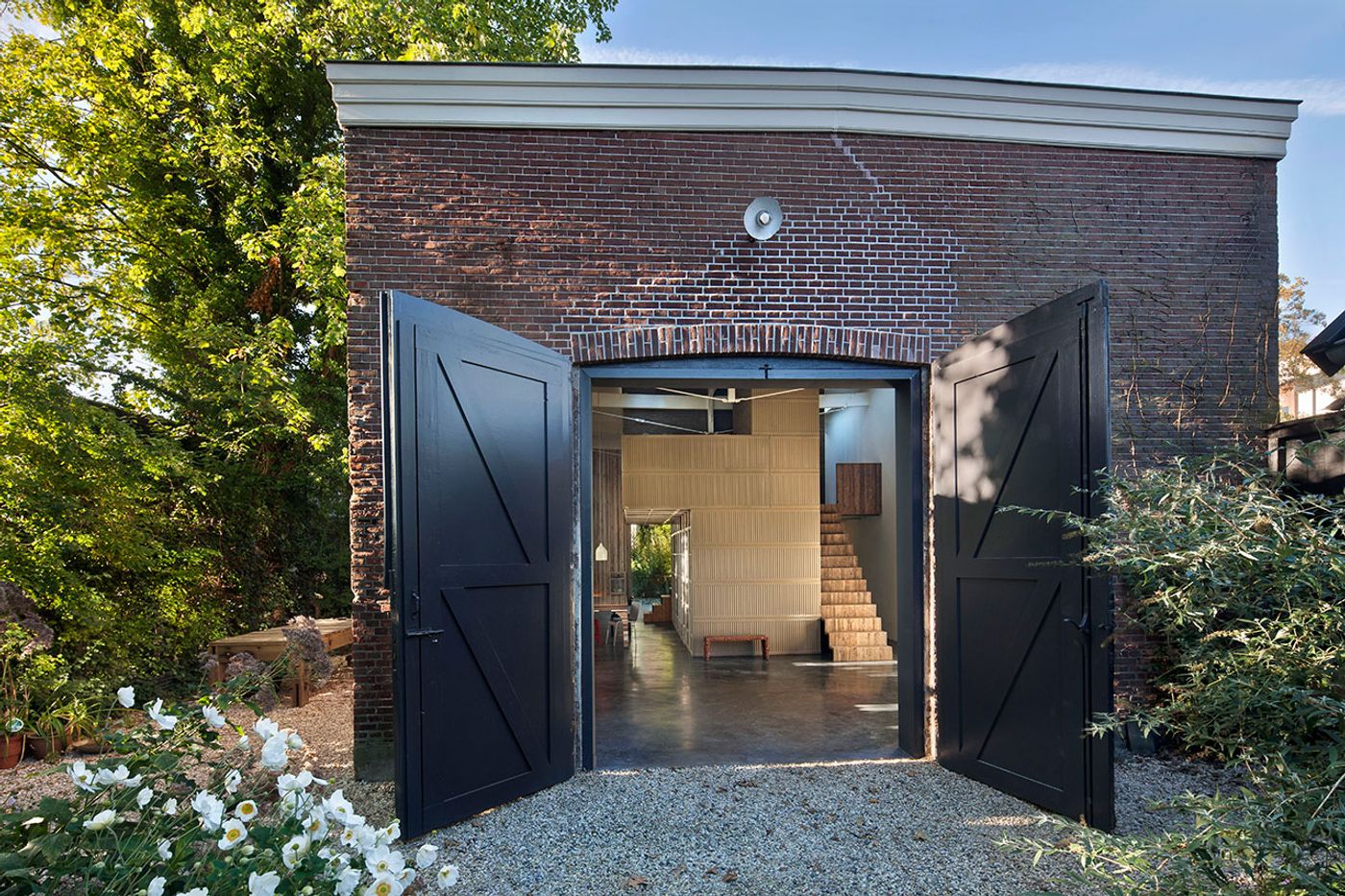
Photography by Christel Derksen & Rolf Bruggink.
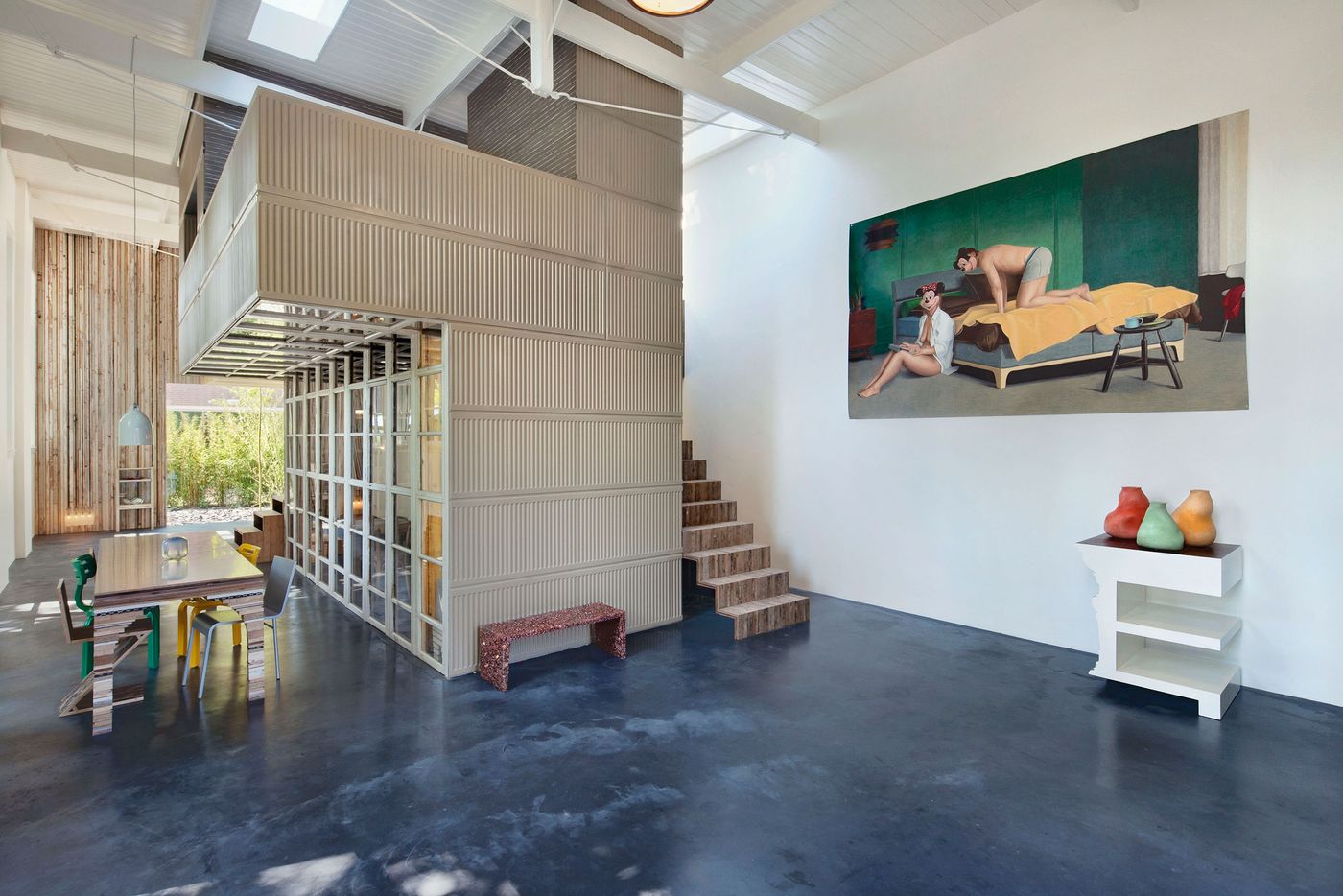
Photography by Christel Derksen & Rolf Bruggink.
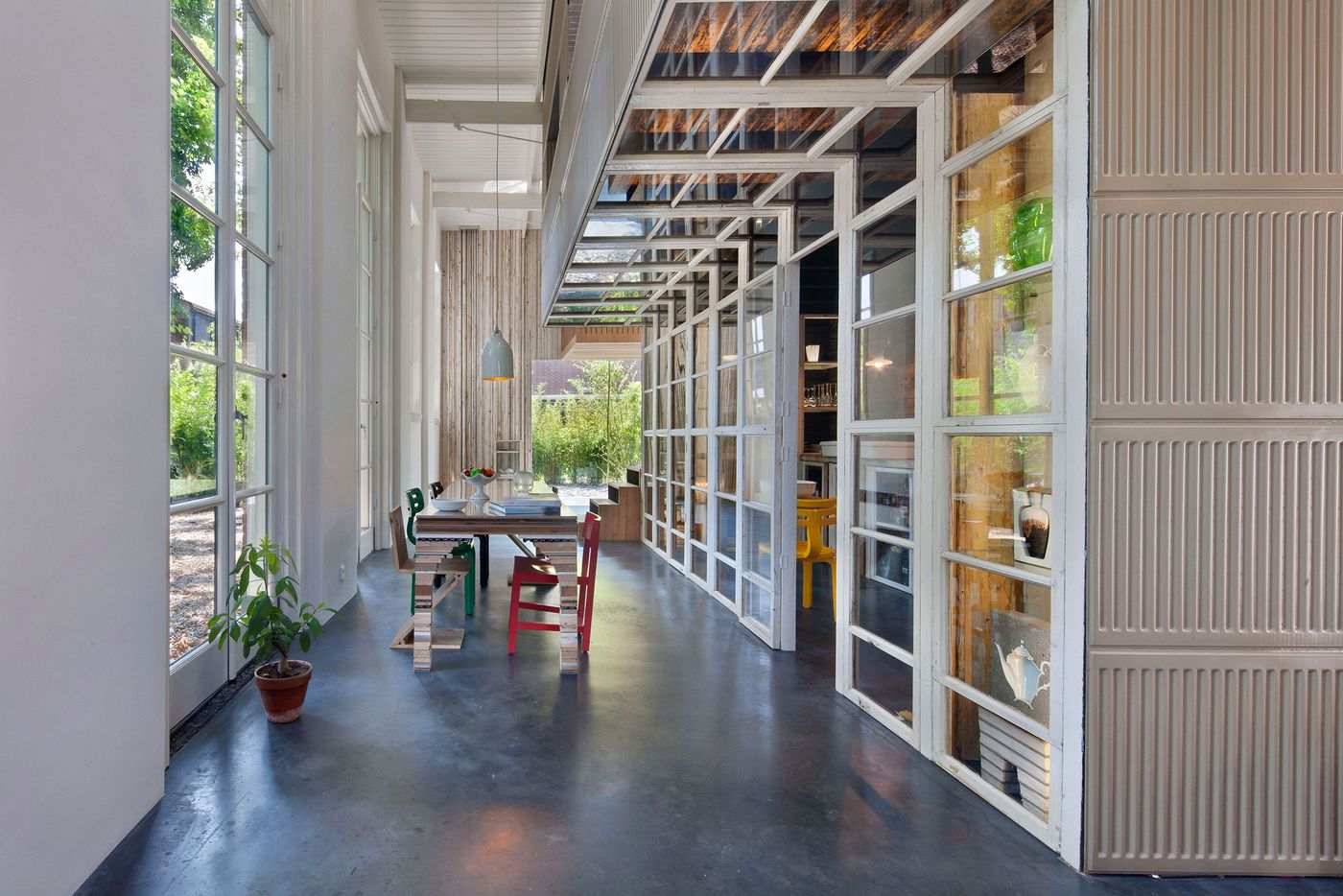
Photography by Christel Derksen & Rolf Bruggink.
Thanks to the building materials’ origins, the house contains singular features ensuring it's a one-of-a-kind home. This includes a solid partition wall that is constructed out of wooden trusses and purlins and a wall which is crafted out of old radiators. To note, the entire structure was built with the aid of a scale model, its design adapting as the build progressed.
The layout itself is beautifully geometric. The 5.5 meter tall ceiling of the brick coach house is supported by five wooden trusses which separate the roof into six equal bays, or three zones. The first zone has been left bare to welcome entrants. The second zone houses the self-supporting, glass-panned main house in the center of the coach house shell, comprised of the sun-drenched kitchen, toilet and technical room on the ground floor and a shower room, bedroom, walk-in closet and office with open bath (like a bird's nest!) on the first floor.
The first floor of the house continues into the third zone; this time the living spaces are connected to the coach house walls in a wooden room "floating" underneath the ceiling and accessed by an elevated corridor along the coach house's far wall. Beneath this a large, sunlit window has been cut into the coach house wall—the only major change to the coach house itself.
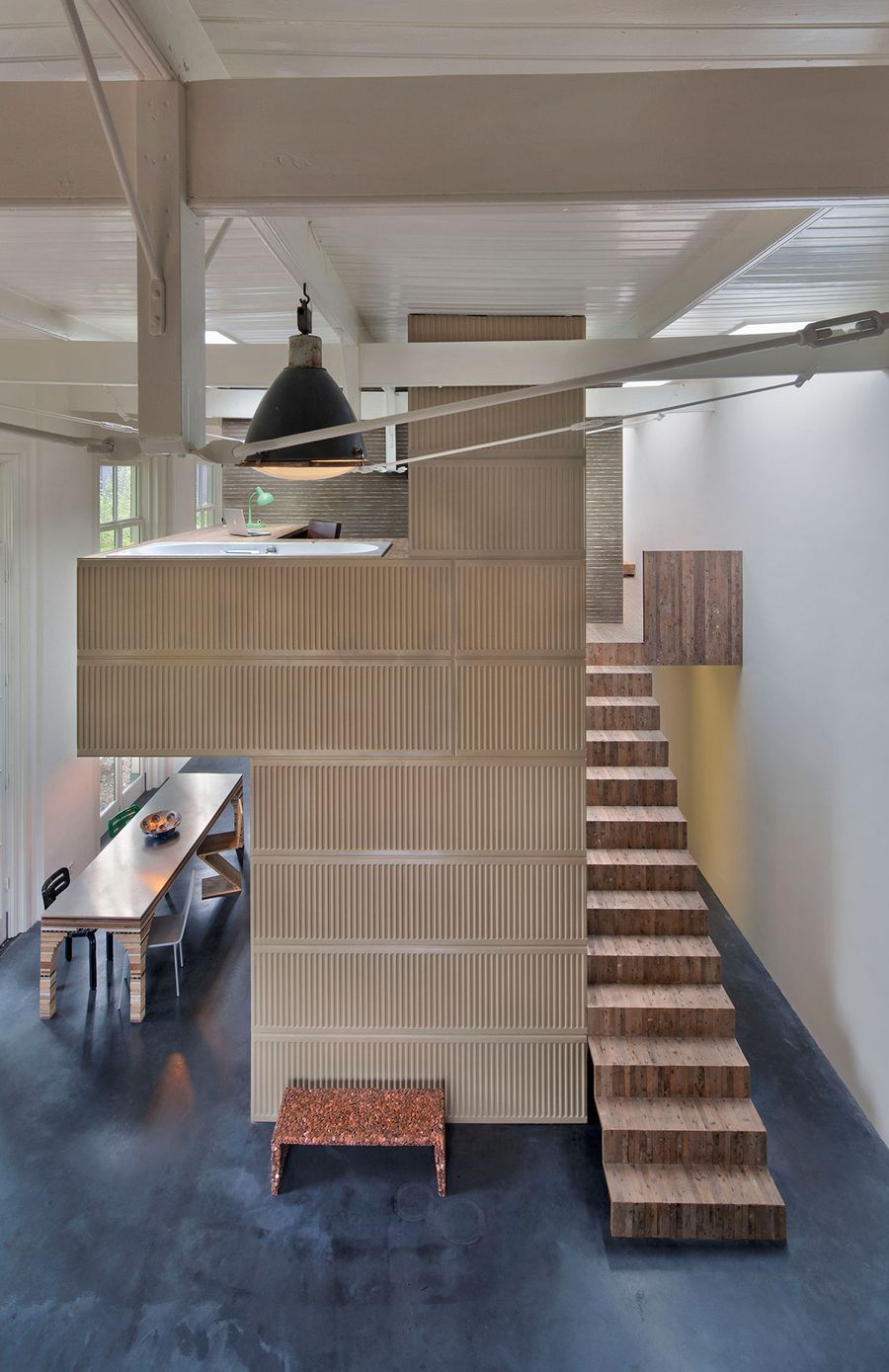
Photography by Christel Derksen & Rolf Bruggink.
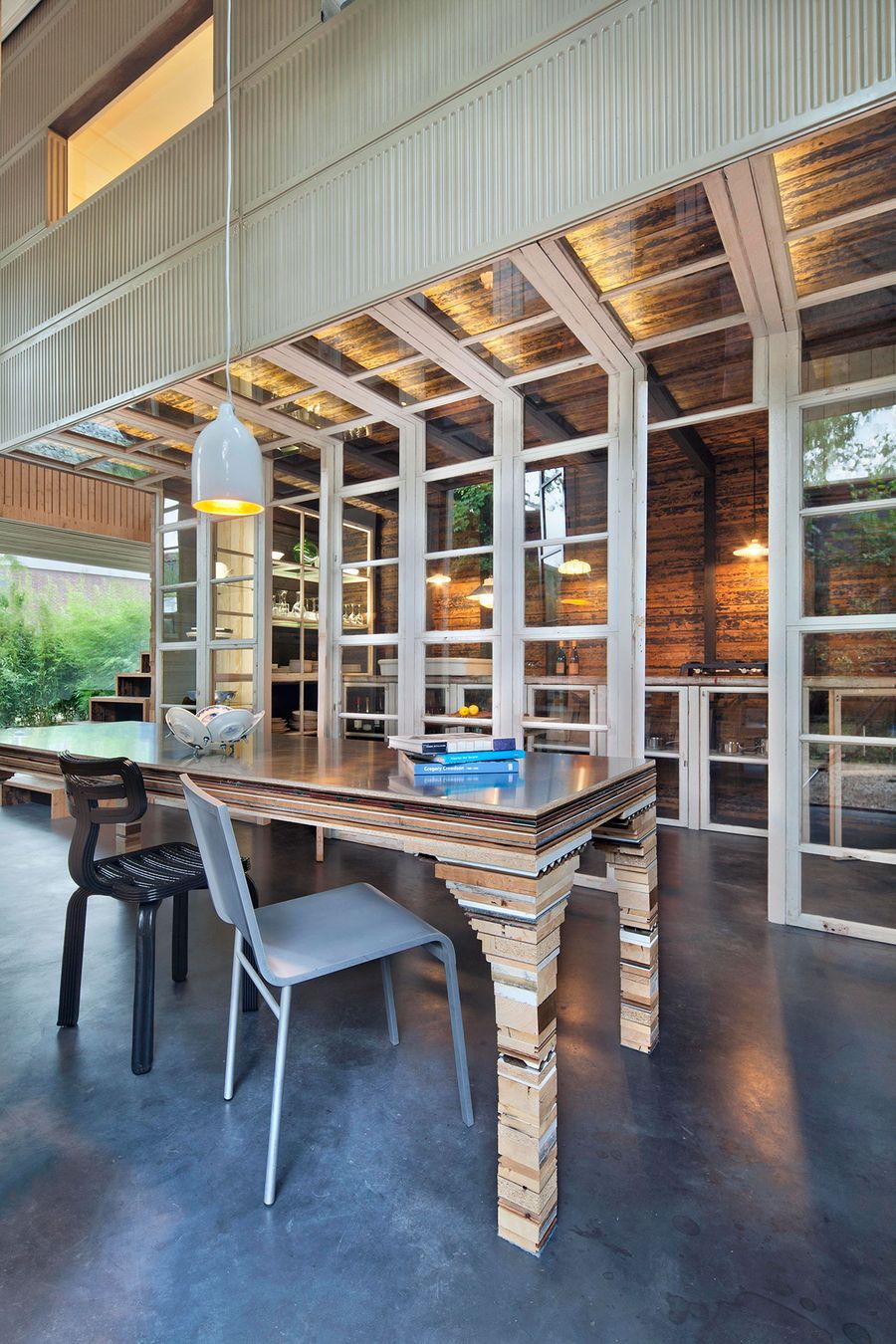
Photography by Christel Derksen & Rolf Bruggink.

Photography by Christel Derksen & Rolf Bruggink.
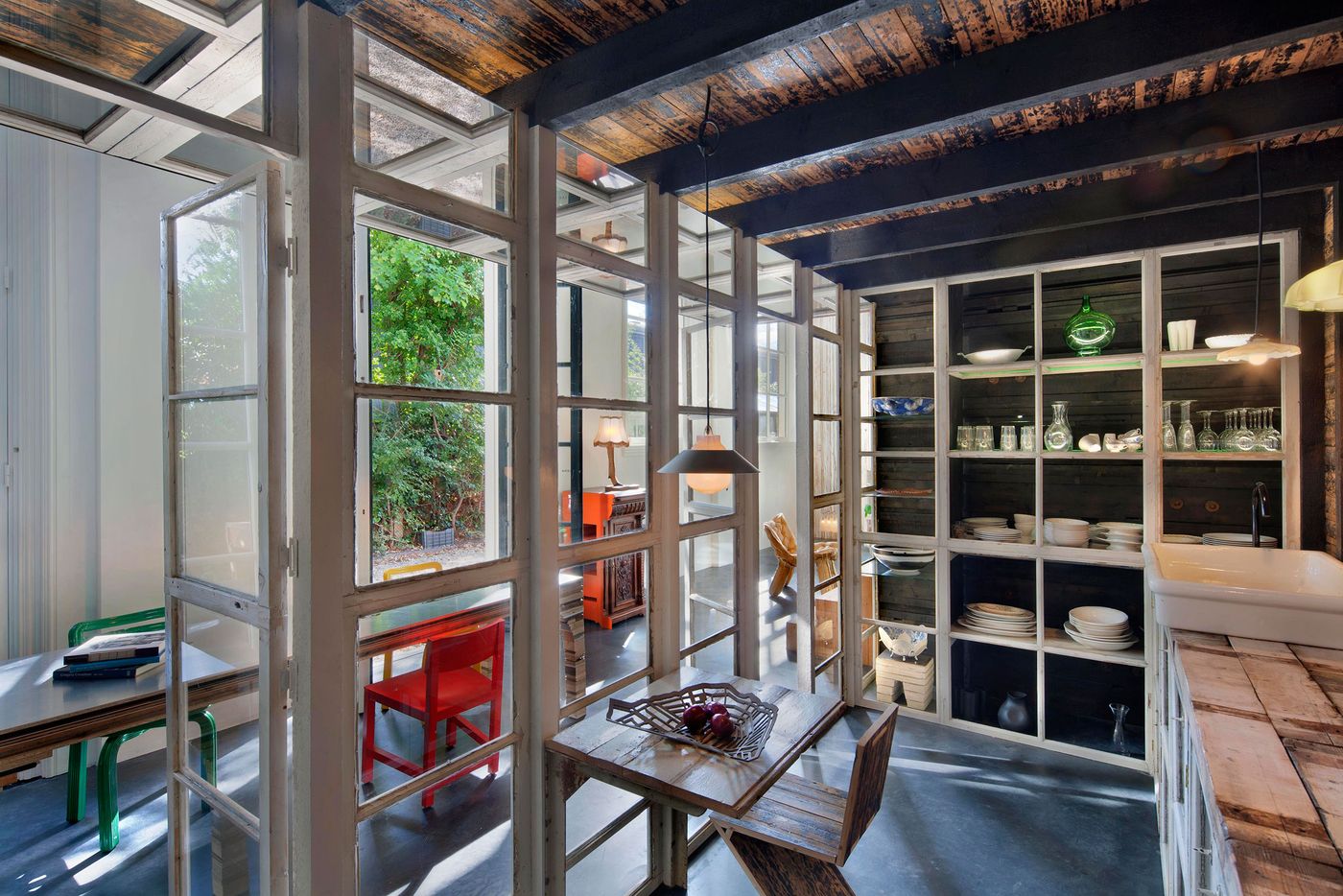
Photography by Christel Derksen & Rolf Bruggink.
The sparse furnishings follow the same design principles and were created by Dutch designers, such as Tejo Remy & Rene Veenhuizen’s amoeba-like and colorful, "Accidental Carpet," which was produced from old blankets, and Dirk van der Kooij’s "Rocking Chair" which was crafted from old CD covers. A really special item is the layered wood dining table which Rolf designed; part of a series of commissioned tables, it has been created through the use of materials collected from old houses that are torn down or remodeled into new ones. Essentially, it exemplifies the ethos and originality of "House of Rolf" which is a link to the past, while looking to the future, resulting in the manifestation of a brand new, creative vision.
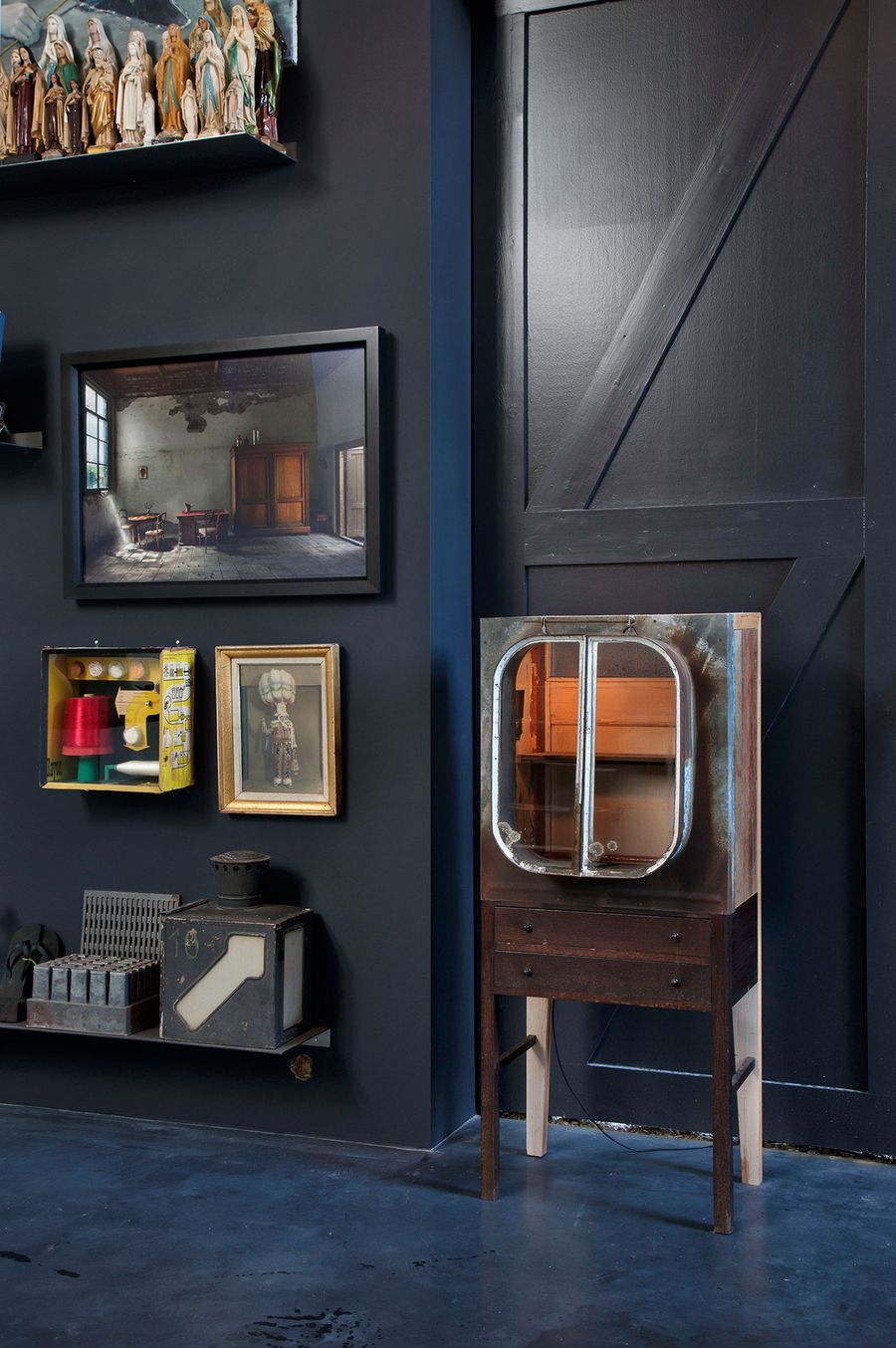
Photography by Christel Derksen & Rolf Bruggink.
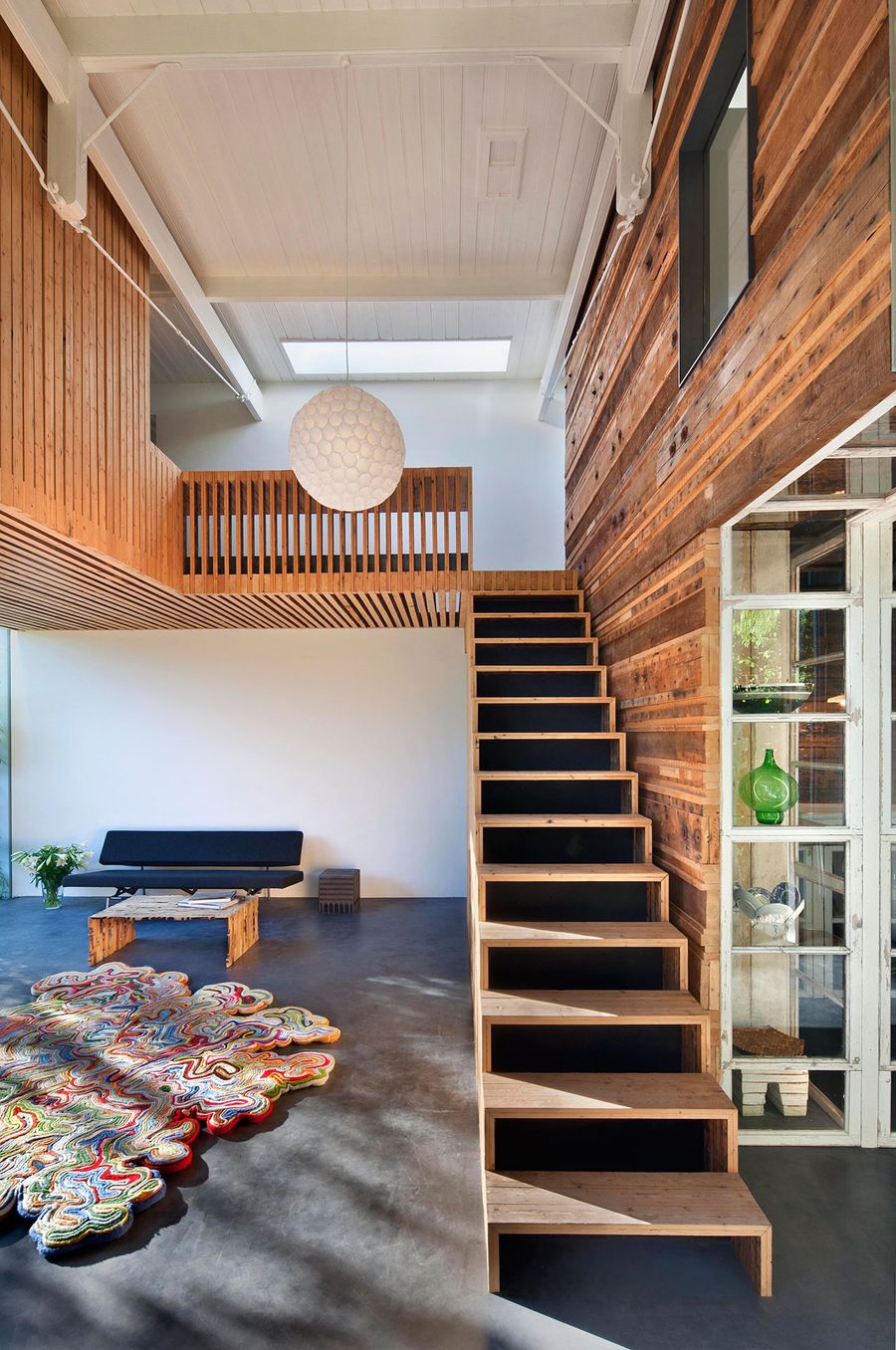
Photography by Christel Derksen & Rolf Bruggink.
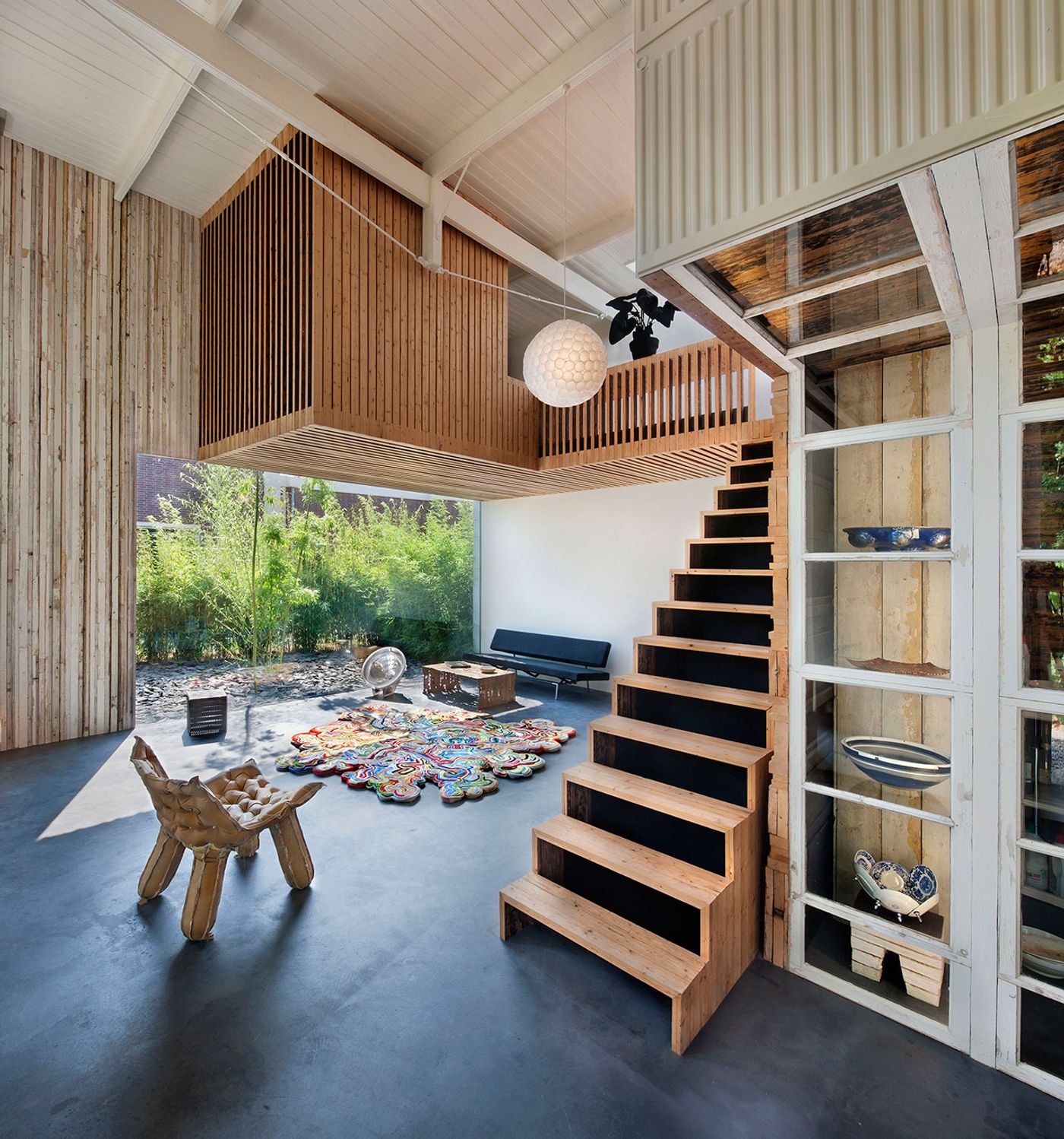
Photography by Christel Derksen & Rolf Bruggink.
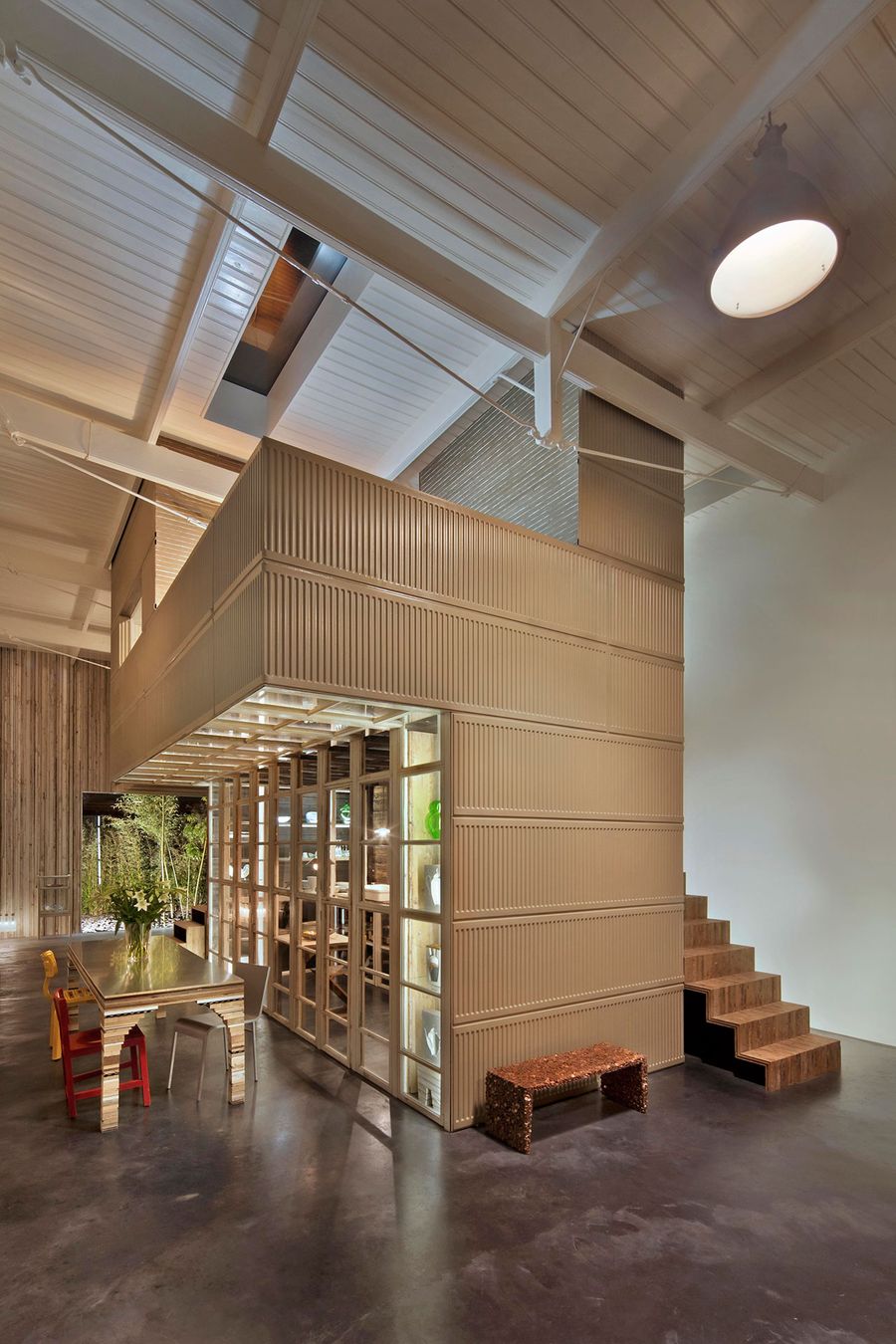
Photography by Christel Derksen & Rolf Bruggink.

Photography by Christel Derksen & Rolf Bruggink.